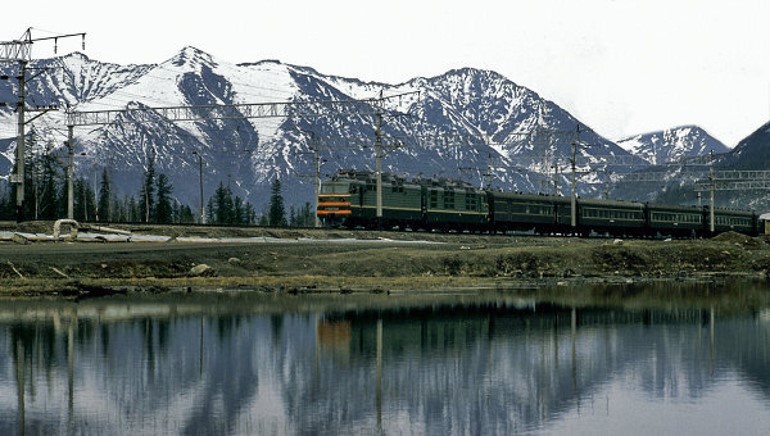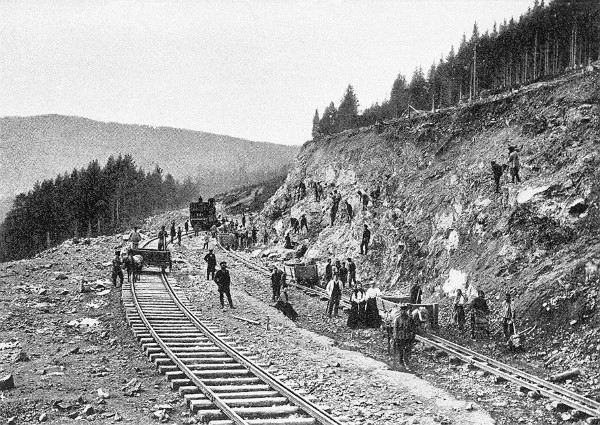125 years ago, in 1891, building of the Trans-Siberian Railway started, which is considered to be one of the greatest infrastructure project in the history of mankind even now. A railway across Eurasia not only made the East closer, but also contributed to creation of many cities, without which it is impossible to imagine Russia.
Transsib’s existence is ordinary now, so we do not realize all the magnitude of this project. Old tracks were replaced long ago, there are quite modern electro transmission poles alongside the railroad and the stations surprise by their modern design. There is few visible evidence of those times, when the road was born. Therefore, passengers crossing the Ural Mountains by train and heading to Siberia hardly think, that they are riding the very Trans-Siberia Railroad they have read about in history text books. They are likely to count minutes and days before the desired station and to dream that the train would gain speed, but forget that someday, when there were no tracks, this trip took almost three months. This circumstance in particular made Alexander III sign a rescript about building the Trans-Siberian Railroad, although this idea seemed to be insane then.
Helping deserted areas
The idea of building a railway track across Siberia emerged in Russian engineers, civil servants and state leaders a long time ago. There is evidence of such kind of projects also during Nikolai I, who was considered conservative, but was kindly disposed towards railways. But the issue of the great Siberian road was seriously discussed first only during Alexander II - exactly then the Far East was accessed to Russia and it was decided to assert on the coasts of the Pacific ocean. And the recent experience of the Crimean war showed, that there was a need for railways for warfare, trade development and just to raise reputation. However, during the Great Reforms, there was simply no money for large-scale projects; private players, who were actively involved in building roads in the European part of Russia, did not even think about Siberia - too far, expensive and profitless. After all, almost no one lived in the vast fields, so there was no demand.
The situation critically changed only in 1880s during Alexander III. Although the current intelligentsia at its most did not favour him, Russia got out of a 30-year-long crisis exactly during his reign. Money returned to Russia, which was so needed for large-scale projects and the government realized the profit of railways, started to massively buy them from private owners and build new ones, including those beyond the Urals. All of this leaded to the terrain reconnaissance for building the new railroad in Siberia, started in 1882 with the tsar’s blessing. But even with such a frisky start, the project would be stalled for a long time, if it weren’t for two circumstances.
Memorial in honor of the Transsib’s building 100th anniversary
In 1886, Alexander III was showed a report of Irkutsk governor general Aleksey Ignatyev, where he described all the profits from building railway in Siberia, including the profits for warfare and trade. Having read the report, the emperor said: “So many reports of Siberian governors general have I read and have to admit with grief and shame, that almost nothing has been done by the government to fulfill the needs of this rich, but deserted areas. But it is high time”. As a matter of fact, this resolution became the start of the Transsib, as Alexander started putting hand to the problem: he gathered a special panel, which started track reconnaissance and also assigned the Russian Technical Association to quickly design technical project of the long awaited road.
But, it was not only the Irkutsk governor general, who prompted the Russian emperor and engineers to decisive actions. At the very same time, good news came from far off Canada, where they have finally finished building the Canadian Pacific Railway. The Canadians, who have built their great railway in the environment similar to Siberian, became a good point for all the skeptics. Considering this example, it was also possible to learn how to start a long and quite expensive project. This was what the Russian Technical Association did from 1887 to 1891.
Great Siberian way
It is meaningful, that Russian engineers were quite selective about their colleagues’ experience. They appreciated the fast solid railing method, which is about building of any material, even of crooked ties and light tracks. All in all, the most important thing was to build the road and to put trains into operation, and the faults might be replaced later.
Canadians and Americans also taught this trick – building from a few different points, what speeded up the process. Using ferries in rivers and wooden bridges was declined. The former slowed down the connections and nearly broke the whole track, the latter was too insecure. The decision was very important, as Transsib was to cross many large rivers, such as Irtysh, Ob, Yenisei, Selenga and Amur. Only iron and stone could last their power and width.
Transsib construction
The engineers handled their conclusion to civil servants in December 1890. In spring 1891, the project was approved by the emperor after violent controversies in the highest cabinets about the amount of financing, width of tracks and terms of their construction. Then started its laborious realization, which took much more time, than it was expected.
Despite all the tricks and economy, the construction cost estimate exceeded 350 million golden Rubles allocated from the budget and reached the exorbitant sum of 1.5 billion.
The terms of the road building changed significantly, too. It was planned to finish the road by 1900. Indeed, by this time, a track was built from Chelyabinsk to Vladivostok, but unforeseen circumstances intervened – in China, where a part of the track went, there was the Boxer rebellion at the time, and several hundreds of freshly built tracks were destroyed in a twinkle of an eye. Three more years were needed to restore and complete the Eastern China part of the railroad.
The problems did not finish here – two years after the lost Russo-Japanese war, they had to build the track from Irkutsk to Khabarovsk once again, but this time across Russian territory. It took, together with building the Circum-Baikal Railway, which replaced an uncomfortable ferry route, nine more years. And only 16 October 1916, i.e. the height of the World War I, granted an opportunity to travel without changing from Moscow to Vladivostok.
Stars of Transsib
During building the Transsib – a time period of 25 years – there were a lot of situations, both joyful and sad ones. Many talented persons, whose names were heard all over Russia, emerged then, one of them was Nikolai Mikhailovskiy. In 1891–1896, he headed the construction of Transsib’s Western Siberian route, reaching from provincial Chelyabincsk to Ob, scarcely populated at that time.
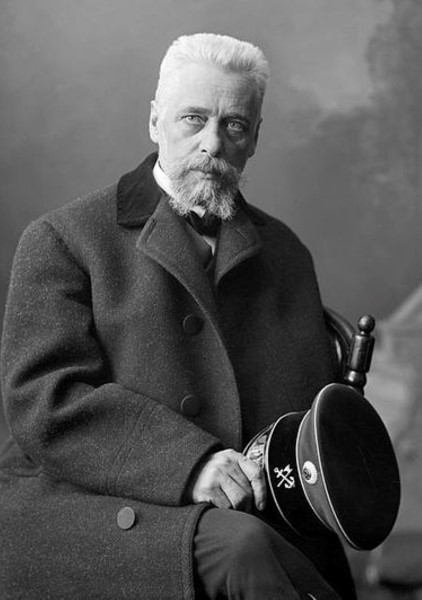
Being a civil servant, he never took bribes or was accused of corruption. Maybe this was the reason why he succeeded in building his part of the Great way so quickly, cheaply and safely. His attention to details not only contributed to his good reputation, but also became the reason for building Novosibirsk, as the railway was at first planned to cross Tomsk, but Mihailovskiy found out, that the banks of Ob in the planned place were unfit for building a bridge, and turning to Tomsk made the route longer for 150 versts. He himself found a good place for a bridge, where the third Russian biggest city and, despite heavy criticism, straightened the Transsib. And, together with that, he published three fabulous novels “Tema’s Childhood”, “Gymnasium Students” and “Students” under the name of N. Garin.
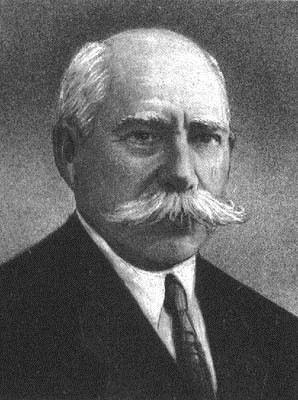
One more “star” of the Transsib was Aleksandr Liverovskiy. His first experience at the railroad was in 1892, when he was fulfilling his summer intern as a student, and finished his Siberian story in 1916, when he spiked the last “silver” tie cotter of the Great road, already being the head of Amur road works. It was exactly him, who was in charge of the most complicated parts of the Circum-Baikal Railway, where he was the first in the world to use electricity in drilling works. It was him, who made the second track from Chelyabinsk to Irkutsk, required to enlarge the freight traffic volumes and finished a unique 2600 meters long Amur Bridge. He also was the Minister of Communication lines in the Provisional Government and consulted the building of one more famous road during World War II – the Road of Life.
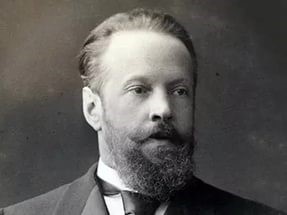
There were even “evil geniuses” of the Great road. Many people consider S. Witte – the Minister of Finance - to be such a person. He insisted on that the Transsib crossed the Chinese territory but we should not forget that it was exactly Witte, who provided an uninterruptable financing of all the construction, and this aspect is the most important one for such a large-scale project.
If we take a wider view, it can be seen that thanks to Witte’s tireless activity in the sphere of railways, except for Transsib, at the turn of 20th century Russia acquired many other important roads and many plants that provided railroads with tracks, steam trains, carriages and other goods. In forty years these plants – for instance the Ural Carriage Building Plant – will be building tanks that will come to the frontline right by the Transsib.
It is interesting, that Transsib, which demanded so much powers and that started working at its full only 25 years later after the building was started, became a real records breaker. At the beginning of 20th century, the Americans announced it the Wonder of the World and it was in the Guinness World Records book thrice: as the longest road (9,288.2 km) with the biggest amount of stations (87) and as the fastest massive monument built. These are all facts, but the main achievement of the Great road is probably that shortening the distances, it connects the big country. And it is opened to the new – for instance the Soviet Baikal–Amur Mainline or its massive modernization, which came unnoticed last year.

